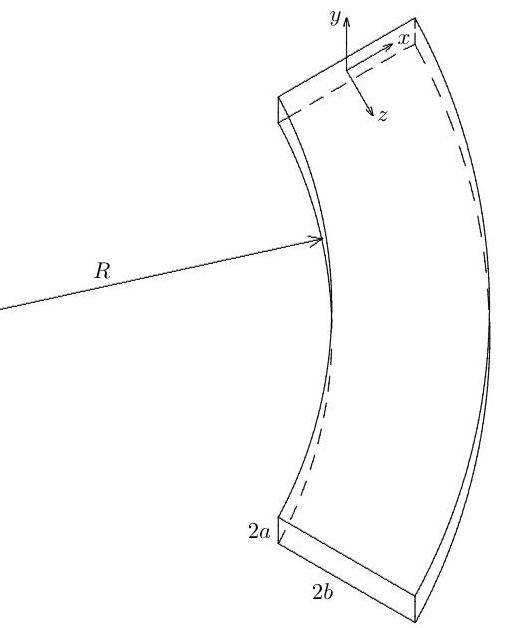3.II B

Viscous fluid of kinematic viscosity and density flows in a curved pipe of constant rectangular cross section and constant curvature. The cross-section has height and width (in the radial direction) with , and the radius of curvature of the inner wall is , with . A uniform pressure gradient is applied along the pipe.
(i) Assume to a first approximation that the pipe is straight, and ignore variation in the -direction, where are Cartesian coordinates referred to an origin at the centre of the section, with increasing radially and measured along the pipe. Find the flow field along the pipe in the form .
(ii) It is given that the largest component of the inertial acceleration due to the curvature of the pipe is in the direction. Consider the secondary flow induced in the plane, again ignoring variations in and any end effects (except for the requirement that there be zero total mass flux in the direction). Show that takes the form , where
and write down two equations determining the constants and . [It is not necessary to solve these equations.]
Give conditions on the parameters that ensure that .